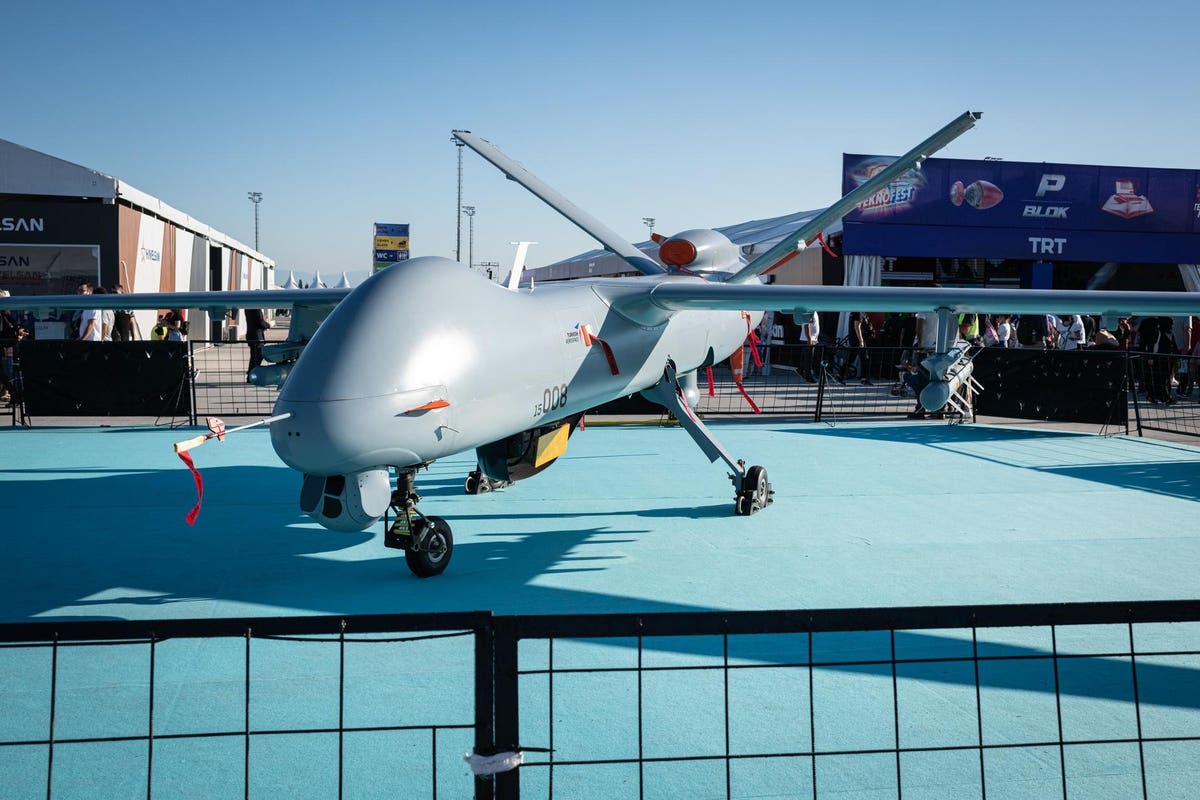The Pentagon announced that one of its F-16 jets shot down a Turkish drone over Syria on Thursday. The U.S. and Turkey are both NATO members and in principle allies, but their interests diverge in Syria. The drone, which had been attacking anti-government Kurdish militants, came dangerously close to U.S. forces and was shot down. But did it really belong to Turkey? Welcome to the confusing world of deniable drone warfare.
“US commanders assessed … the UAV [Uncrewed Aerial Vehicle, or drone], which was now less than a half kilometer from US forces, to be a potential threat,” Pentagon spokesman Brigadier General Pat Ryder said in an official DoD statement.
“US F-16 fighters subsequently shot down the UAV in self-defense,” he said.
American forces made “a dozen calls” to Ankara’s military to try and get the drone to turn around before resorting to shooting it down.
The Syrian Tangle
The drone was previously observed attacking Kurdish YPG militants close to U.S. forces. The YPG is tied to the Kurdistan Workers Party (PKK) which has been engaged in an armed struggle with the Turkish government for more than forty years. Turkey therefore regards the YPG as enemies, while the U.S. supports the YPG as a valuable ally against ISIS. However, U.S. forces did not take action until the drone came closer to their position. The drone was not attacking U.S. positions but was considered a threat due to the risk of it accidentally targeting them.
However, the Turkish government has denied that the drone belonged to their military. They did not say who it was supposed to belong to.
“It is not only the Turkish military that conducts counterterrorism operations in northern Iraq and Syria,” according to an official spokesman. (This denial does not rule out it belonging to another Turkish agency).
Drones: Deniable Warfare
Turkey’s disowning the drone may not be credible, but it is diplomatically convenient. The shooting down of one NATO member’s aircraft by another NATO member is a major incident; not enough to trigger Article 5 perhaps – the right of NATO members to call on other for assistance when they are under armed attack —- but serious.
However, if the drone was not in fact Turkish, which is the legal fiction being pursued, then there was no such incident and no need for any further escalation on either side. This will help calm a situation where volatile nationalist politicians may demand action when they think their country is being slighted.
The type of drone involved was not stated by the Pentagon, though some commentators have identified it as being an Anka-S medium-altitude, long-endurance drone made by TAI. The Anka-S is bigger than the Bayraktar TB2s used so successfully in Ukraine and Nagorno-Karabakh. It lies somewhere between the U.S. MQ-1 Predator and the much larger MQ-9 Reaper, carrying a warload of up to 200 kg/450lbs of weapons which can include MAM-L laser-guided ani-tank missiles as used Ukraine and pods of CIRIT 2.75” guided rockets pod to engage lighter targets and personnel.
However, with no wreckage, the identity of the drone remains in doubt, and even if forensic evidence suggests a Turkish origin the government can still stick by its denial.
Deniability has always been a key aspect of drone operations. Back in 1964, China paraded the remains of U.S. Firebee drones shot down in reconnaissance missions over China. The U.S. government simply denied any involvement, and unlike the U-2 spy plane incident four years before where Moscow had been able to put pilot Fencis Gary Powers on public trial, there was nothing more China could do.
We have seen drone denial countless times since, whether it is Iran denying that its drone was shot down harassing a U.S. warship or Israeli denying that it had anything to do with a drone attack on militants in Beirut. And of course the CIA’s entire campaign of drone strikes against terrorists in third-party countries such as Pakistan has been carried out under a cloak of ‘cannot confirm or deny’.
The situation is complicated by the fact that drones will contain components from a multitude of different sources; the presence of U.S. electronics (used in many Russian drones) does not make a drone is American. And drones may be cloned. Iran in particular is notorious for producing copies of captured US drones like the Boeing ScanEagle, so a drone that looks like an Anka-S may not be the real thing.
A Complex Future
This deniability of drones is politically convenient and allows them to carry out operations far too sensitive for human pilots. In this case, it may have successfully defused a potentially ugly international incident.
However, drones may be the problem. If they did not offer a risk-free, convenient methods of attacking YPG forces, Turkey would not have been flying one in the area in the first place. And the spread of highly capable but deniable attack drones means that it may be increasingly possible for everyone to carry out anonymous strikes, including non-state actors such as Kurdish militants, who already have their own drones. This raises all sorts of possibilities for false-flag attacks and stirring up trouble.
The drone shoot-down is unlikely to lead to conflict between two NATO members. But it does point the way to a complex and messy future.
Postscript: As a counterpoint to the drone shoot-down, on the same day several weaponized drones hit a Syrian military graduation ceremony at Homs, killing at least a hundred people and wounding hundreds more including civilians and senior officers. This was the biggest attack of its type in Syria, but it is not known who carried it out and no group has taken responsibility.
Read the full article here





